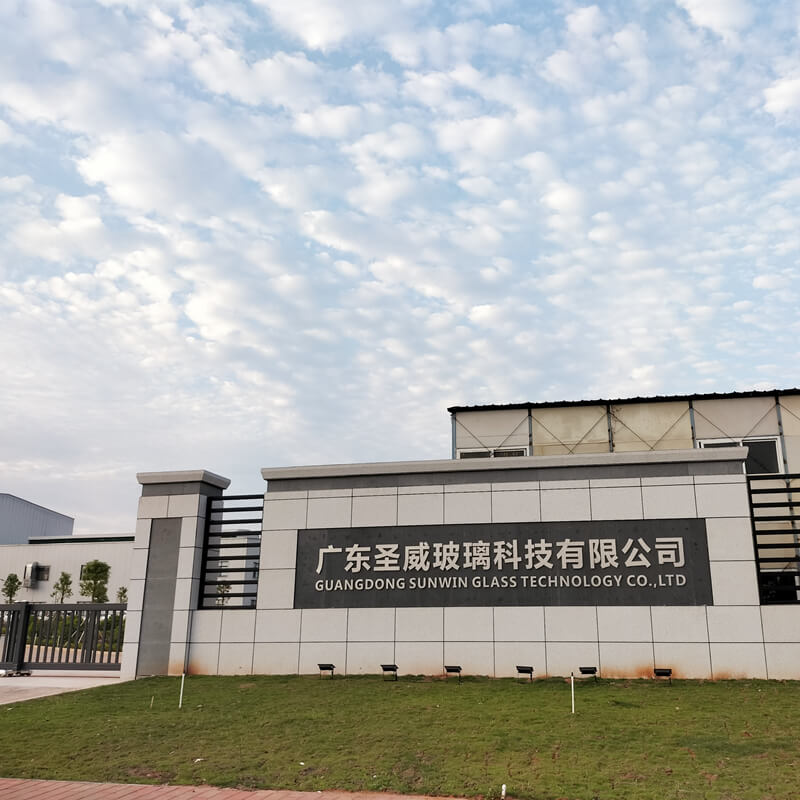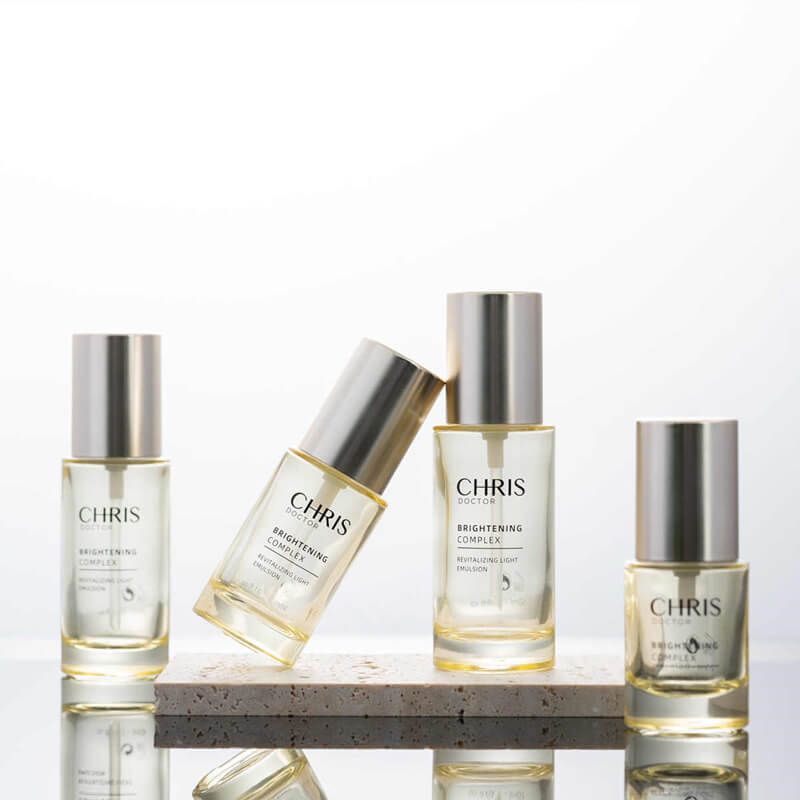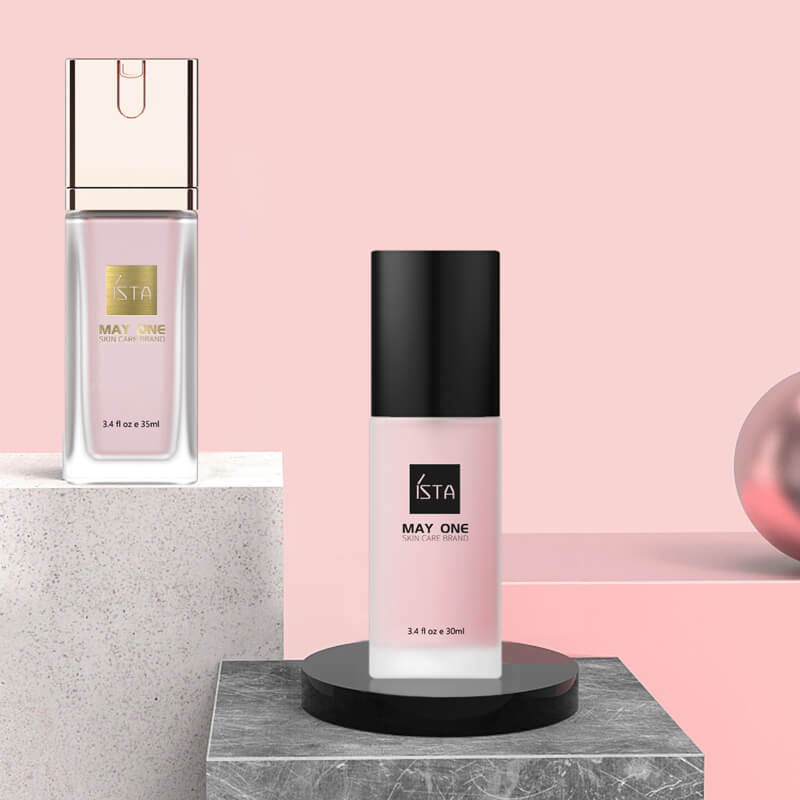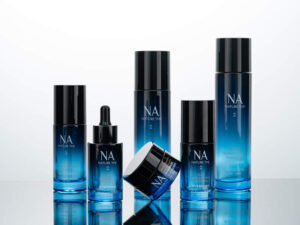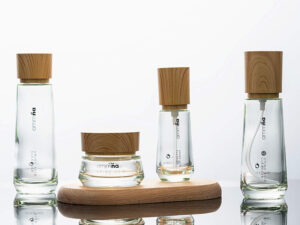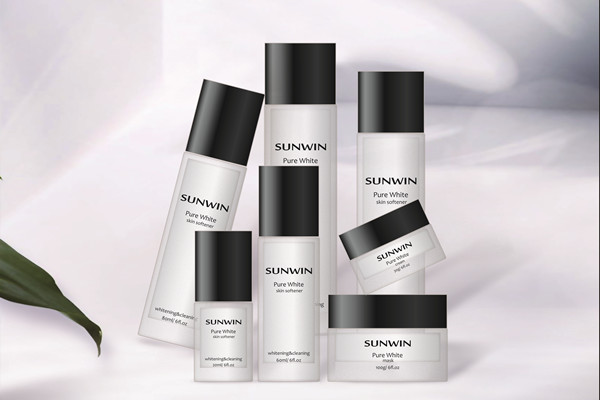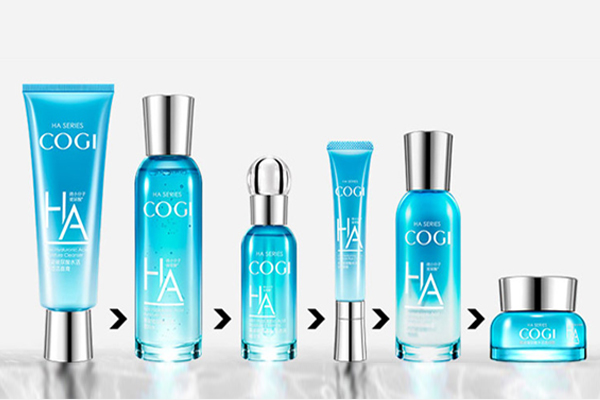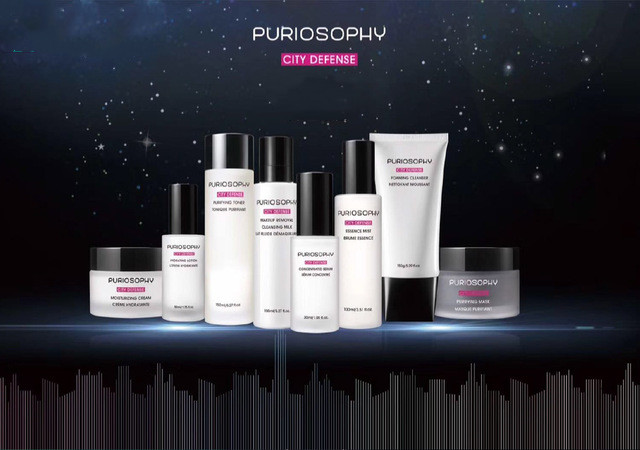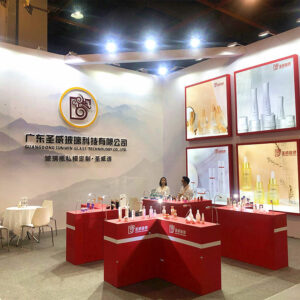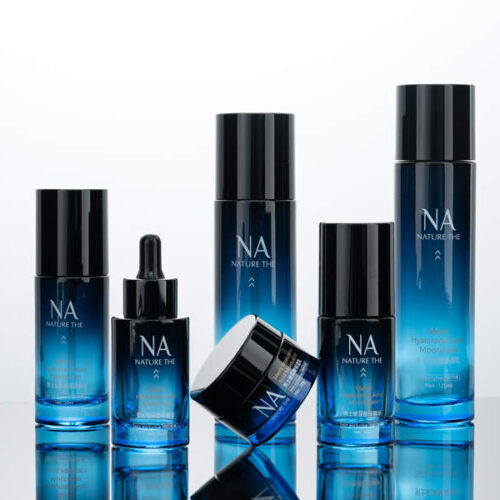After the glass bottle is formed and spraying on the surface, the next step is graphic printing, which showing the company’s product information and brand logo. There are vary kinds of graphic printing. Here we mainly introduces several common processes in cosmetics packaging industry, such as silk screen printing, heat transfer, hot stamping, water transfer and so on.
Silk screen printing
- Direct plate making method
Method: The direct plate making is first place the photosensitive film with light-sensitive on the working table, and place the stretched screen frame flat on the base. Fill in the photosensitive paste on the screen frame and apply pressure with a soft squeegee. After it is fully dried, the plastic film base is removed, and the photosensitive film wrist screen can be used for printing. After development and drying, a screen printing screen is produced.
Process flow: stretched screen → degreasing → drying → stripping of film base → exposure → developing → drying → revision → sealing screen.
- Indirect plate making method
Method: Indirect plate making is to expose the indirect film first, harden it with 1.2% H2O2, develop it with warm water, and dry it to make a peelable graphic film. The film surface of the graphic film is tightly attached to the stretched screen during plate making. , By squeezing to make the glue film and the wet silk screen adhere to each other, peel off the film base, and dry it with wind to make the screen printing screen.
Process flow:
1) Stretched net→degreased→drying
2) Indirect film → exposure → hardening → developing → laminating → drying → revision → sealing
- Directand indirectmixed method
The photosensitive adhesive layer is first pasted on the screen frame with water, alcohol or photosensitive glue, and dried by hot air, the base of the photosensitive film is removed, and then the plate is exposed and developed to form a screen plate.
Electroplating process
Electroplating is the abbreviation for electrolytic metal plating. Electroplating is to immerse the plated part (product) in a chemical water containing the metal ions to be plated and connect the cathode. Place an appropriate anode at the other end of the chemical solution (soluble or insoluble). After the direct current is applied, the surface of the plated part is A method of depositing a thin metal film. The simple understanding is the change or combination of physics and chemistry. Electroplating methods that are more commonly encountered at present: aqueous plating (barrel plating, rack plating, continuous plating), chemical plating.
Production cost: mold cost (none), single piece cost (high)
Typical apply products: surface treatment of vehicles, consumer electronics, furniture, jewelry and silverware, etc.
Suitable output: small quantity to large quantity
Quality: extremely high gloss, anti-oxidation and corrosion
Production speed: medium speed, depending on material type and coating thickness
- Electroplating equipment
The best advantage of electroplating is: on the surface of metal or non-metal parts, a new and extremely high-gloss metal layer can be added, which look much more beautiful than the original parts. Compared with directly use metal parts , the cost is much lower. Electroplating specific areas on the surface of the same part can be coated with special wax and paint on areas that do not require electroplating. Chrome and gold plating is widely used in surface treatment of cosmetic glass packaging industries.
- Main materials
There are about 30 kinds of electroplated metals, among which zinc, cadmium, copper, nickel, chromium, silver, tin, gold, iron, cobalt, lead, antimony, platinum, titanium, rhodium, etc. are more widely used. kind. In addition to single metal coating, there are many alloy coatings too.
For plastics, ABS is the most commonly used because ABS can withstand electroplating high temperatures of 60°C (140°F), and its electroplated layer and non-plated layer have high bonding strength. Most metals can be electroplated, but different metals have different grades. Purity and plating efficiency. The most common ones are: tin, chromium, nickel, silver, gold and rhodium (rhodium: a kind of platinum, extremely expensive and can maintain high brightness for a long time, can resist most chemicals and acids. The most commonly used to gloss the surface of the product For products with extremely high degree of requirements), nickel metal cannot be used for electroplating products that touch the skin, because nickel is irritating and toxic to the skin.
- Plating description
The purpose of electroplating is to plate a metal coating on the substrate to change the surface properties of the substrate.
According to the coating, it can be divided into chrome plating, copper plating, cadmium plating, tin plating, zinc plating and so on.
During electroplating, the plated metal or other insoluble materials are used as the anode, the workpiece to be plated is used as the cathode, and the cations of the plated metal are reduced to form a coating on the surface of the workpiece to be plated. In order to eliminate the interference of other cations and make the coating uniform and firm, it is necessary to use a solution containing the coating metal cations as the electroplating solution to keep the concentration of the coating metal cations unchanged.
We take the ABS plastic parts as an example. ABS electroplating is to chemically corrode the B (butadiene) in ABS to make the surface of the product show some loose pores, and then attach a layer of conductor (such as copper) to make It can conduct electricity, and then refer to the metal plating method for electroplating. Therefore, ABS electroplating is a mixture of electroless plating and electroplating.
Electroplating process
Pre-treatment (grinding→preparatory washing→water washing→electrolytic degreasing→water washing→acid immersion and activation→water washing)→neutralization→washing→plating (priming)→water washing→neutralization→water washing→plating (surface)→water washing →Pure water→Dehydration→Drying
In the cosmetic packaging material industry, since the coating after electroplating cannot directly contact the contents, the electroplating process is mainly applied to external components, such as various glass bottle body, pump, cap and lids or other cosmetic tool components, etc.
Click here to know more about the deep processing for glass bottle

